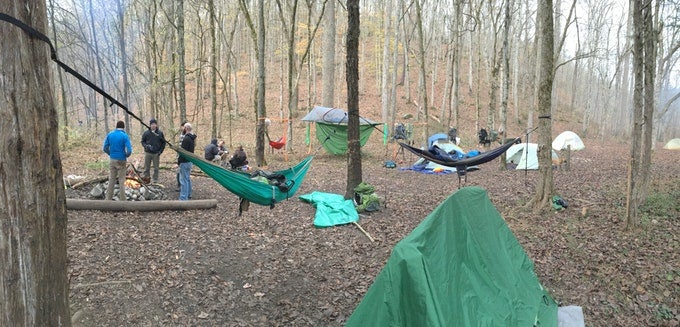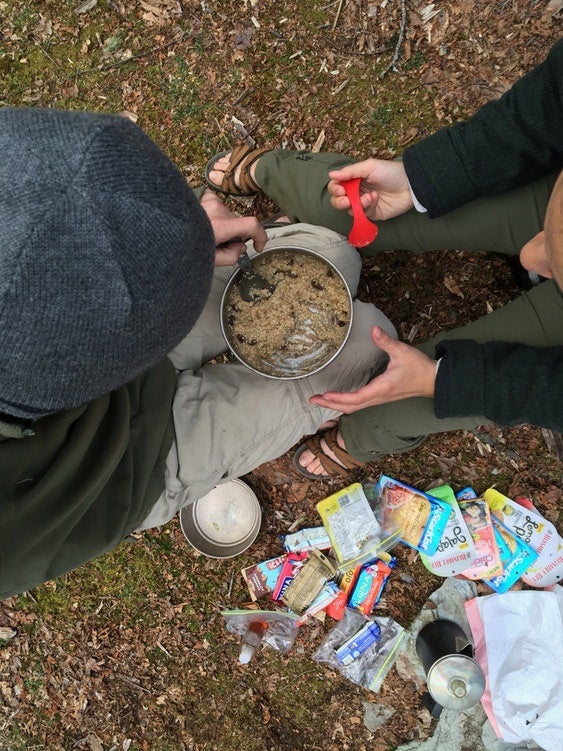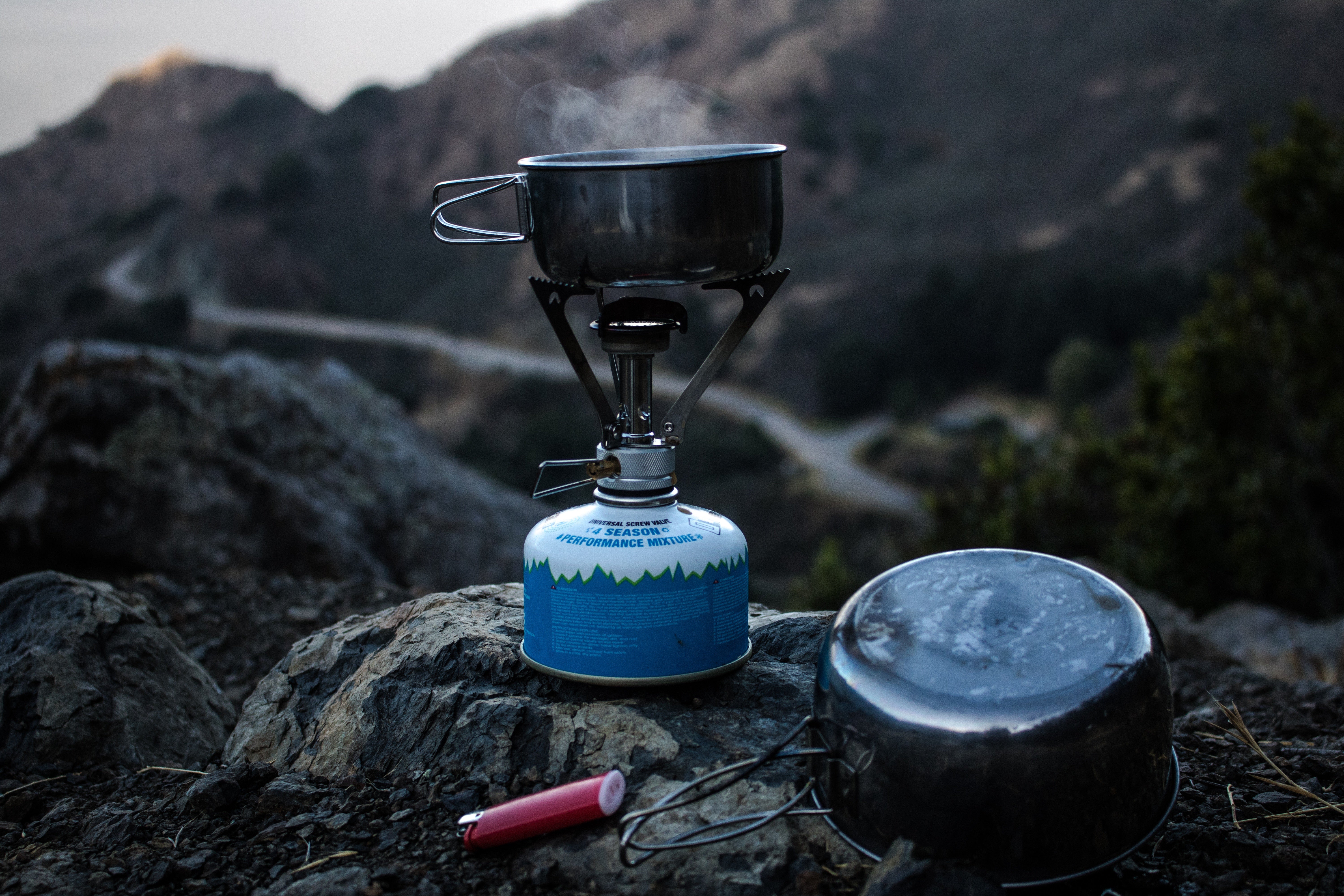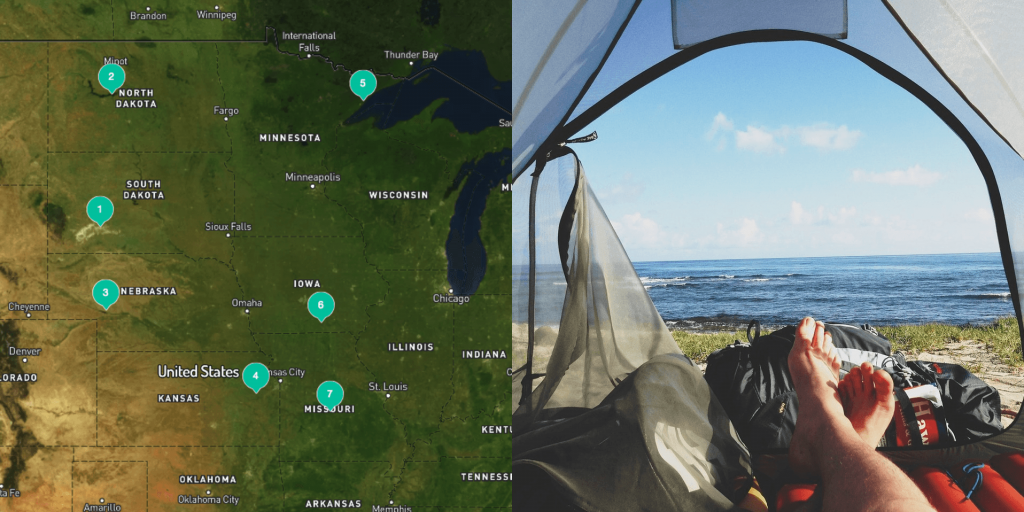Meal prep and planning can be difficult, especially when you have limited space in your pack for food. Our friends at Mountain House know a thing or two about backcountry camping and how to make backpacking food that taste like home. Try out their Beef Stroganoff or Macaroni and Cheese on your next backcountry excursion.
Each year hundreds of participants embark on thousand-mile journeys along the Pacific Crest Trail, Appalachian Trail, and other lesser known thru-hikes in the US. They’ve done the research, read all the tips and tricks for planning a thru-hike, and have packed and unpacked their bag more times than they cant count.
The most important part of all these epics? Food. Tackling a thru-hike, or any backpacking objective, requires careful planning and consideration of what you’ll eat, how you’ll cook it, and how you’ll store your food until you’re ready to cook it.
Best and Basic Food Options for Backcountry Camping

Backcountry camping at The Walls of Jericho Primitive Campsite // Photo by The Dyrt user Ethan K
Some might want to create backcountry gourmet masterpieces to post on Instagram, but the rest of us are simply looking for solid fuel to power us through our next 18 miles over three mountain passes.
Here are some backcountry food basics, along with tips on what to bring and how to bring it.
Dried Food
Think oatmeal, dried fruits, pasta. Dried food encompasses anything you can easily pack without refrigeration, and doesn’t take up precious real estate in your backpack. They’re also relatively easy to cook, with most only requiring boiling water.
Most snacks you’re packing should come in the form of dried food: nuts, bars, and drink mixes all fall into this category.
Fresh Food
If you’re heading into the woods for only a day or two, packing fresh food can feel like a luxury and make for an easy first night at camp meal. Any trip longer than a day and you’re wasting space in your pack that could be used for more practical food.
Canned Food
Stay away from 15 oz cans of beans and soup, and look towards lighter, denser options like canned tuna. The only consideration here is packing a can opener, and the fact that you’ll be packing that empty can with you until the terminus of your hike.
Try to switch your canned food for packaged food. Tuna can also be found in single serve packages that are lightweight and take up essentially no space in your pack.
Freeze Dried Foods
Freeze dried foods are the most ideal solution for multiple days on the trail. They are lightweight, and they pack a lot of calories, sodium, and protein into only a few ounces. We’re pretty keen on Mountain House’s line-up of product (some even eat their Biscuits and Gravy at home, they’re so good).
Backcountry Camping Meal Suggestions

Backcountry cooking at Bartram Trail Campground // Image from The Dyrt user Asher K.
Now that we’ve covered what types of food to bring on your trek, here are some suggestions for easy and light backcountry camping meals.
Breakfast
Mountain House’s Breakfast Skillet wins flying colors from The Dyrt Ranger Matt S., “The taste is awesome, it is light weight, and I would call it major comfort food!” Beyond freeze-dried, pancakes are a trail winner because you just add water. Many outdoor enthusiasts also swear by oatmeal (I’m not one of them), or eggs and precooked bacon.
Lunch
Lunch on a backpacking trip looks more like a long series of snacks than an actual sit down meal. If you’re feeling ambitious in the morning, make yourself a PB&J to enjoy around noon. Otherwise, have some protein packed, nutritious snacks at the ready: almonds, jerky, and bars will help keep you fueled throughout the day.
Dinner
Dinner should be a celebration. If you’ve embarked on a thru-hike, you’ve covered 15-20 miles, and your stomach is probably more than ready to be filled to the brim with hearty dinner goodness. Idahoan Mashed Potatoes, couscous, and dehydrated vegetables are all major winners for a hearty and filling backpacking dinner. Throw in some bacon bits for added protein, and pack spices to jazz up the pasta, rice, or couscous you’re using as a base.
What to Consider
Some major points to consider when planning your backcountry camping meals: weight, nutritious value, and calories. Out on the trail it’s possible to burn 500+ calories an hour. That means your meals have to be jam-packed with calories to fill the void. This isn’t the time to skimp, or try out that new diet plan. Focus on what food will fuel you, and if it’ll be easy to carry.
The Dyrt is the only camping app with all of the public and private campgrounds, RV parks, and free camping locations in the United States. Download now for iOS and Android.Popular Articles:
Articles on The Dyrt Magazine may contain links to affiliate websites. The Dyrt receives an affiliate commission for any purchases made by using such links at no additional cost to you the consumer.



